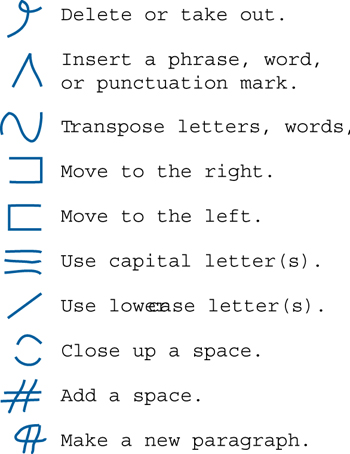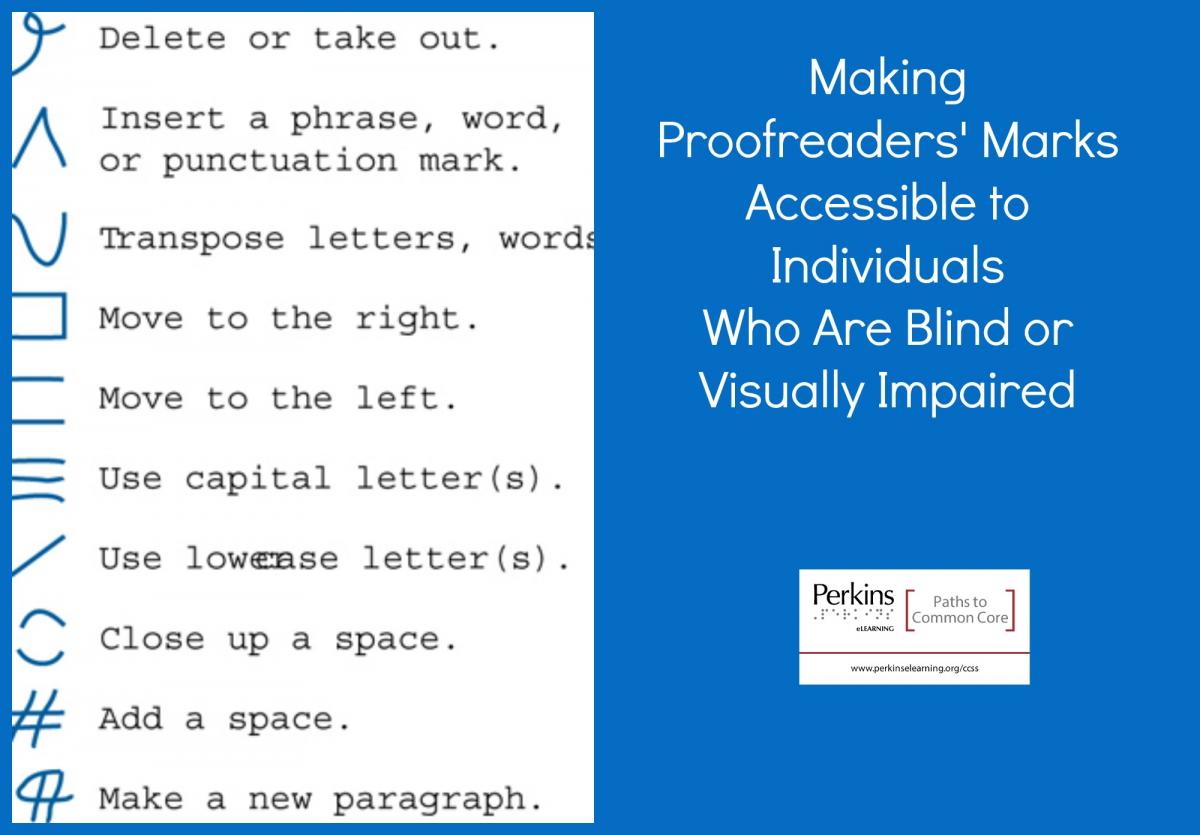Making Proofreaders' Marks Accessible to Students with Visual Impairments
Submitted by WendyPatrone on Dec 31, 2014

When a language arts teacher grades a written assignment, he or she may use proofreaders’ marks to indicate mistakes. If a student with a visual impairment is a print reader, these marks may cause confusion or may not be practical when using CCTV or another magnification device since the whole page is not viewed at one time. If the student is a braille reader, proofreaders’ marks are not useful unless they are tactile. When I was a French teacher, I came across a product developed by a foreign language teacher that utilized numbers instead of proofreading marks. I have taken that idea and modified it for use with students with visual impairments.
Objectives:
- Students will edit writing assignments based on a numerical proofreading system.
- Students will comply with all standard English rules regarding mechanics, usage, capitalization, and spelling.
- Students will use proper sentence structure.
- Students will develop well-written paragraphs that include a strong introduction and conclusion.
- Students will identify the main idea of their writing.
- Students will provide supporting details in their paragraphs.
- Students will use proper paragraph formatting.
Procedure:
- Instead of using traditional proofreading marks, assign numbers to the mistakes in the students writing.
- Return work to students.
- Distribute numbered proofreading sheet.
- Explain to students that all mistakes have been assigned a number.
- They are to find the corresponding number on the proofreading sheet and analyze their mistakes.
- Students are to make corrections, rewrite the assignment, and resubmit an edited final copy.
- *All work does not have to be resubmitted. The proofreading marks can be utilized to point out mistakes or to indicate where points were lost.


